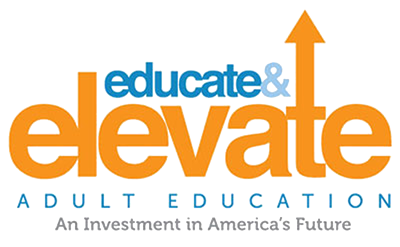California
Adult Education Innovations

Citrus College Adult Education Consortium
The Unified School Districts of Azusa, Claremont, Duarte, Glendora, and Monrovia have partnered with Citrus College
The Challenge
A significant challenge for creating seamless transitions for students enrolled in Citrus College Adult Education Consortium (CCAEC) member institutions was aligning the disparate noncredit courses for each English as a second language (ESL) level offered by the members. Course descriptions and learning objectives at every ESL level must be aligned across the consortium to better promote student progress and student transition to college credit courses. However, the alignment of courses had many inherent challenges. All K-12 members had varied data measurements, resource constraints, and other challenges. Citrus College had its own clearly defined learning objectives and course descriptions for all ESL levels, but these were not necessarily aligned to K-12 member courses, nor did its program use similar data measurements. Even some K-12 ESL courses were not aligned in terms of pacing and learning objectives.
The Solution
During the initial alignment phase, K-12 institutions aligned course descriptions, learning outcomes and data measurements before involving Citrus College faculty. During AB86 planning, significant time and resources were used as K-12 faculty met frequently to work on this course alignment. A substantial part of that planning time was needed to build community and trust among the K-12 faculty.
During the 2015-16 school year, the CCAEC board committed considerable AEBG funding to continue ESL course alignment. Citrus College faculty and administration engaged in the alignment efforts and K-12 members performed a thorough analysis of college course descriptions. All member K-12 ESL faculty spent hours comparing Citrus course-outline learning objectives to K-12 courses and practice. The process was exhaustive and only possible because of AEBG funding.
By January 2016, the ESL Faculty Advisory Committee (FAC) synthesized findings from the entire K-12 faculty and, by the end of the school year, the FAC created detailed and exemplary learning objectives, which the consortium has called Language Proficiency Objectives (LPOs). CCAEC LPOs define clear objectives, from beginning literacy to advanced low, for reading, writing, listening, speaking, grammar and vocabulary. The LPOs plainly articulate the skills and knowledge a student should demonstrate to be proficient at each ESL level and show a clear progression in skills as students move up ESL levels.
In 2016, AEBG funds allowed the ESL advisory committee to create level exams based on the LPOs. Level exam questions were created and piloted, and the FAC is creating a bank of questions available to faculty to assess student proficiency at each level. The FAC is exploring how to best utilize this question bank. The thought is now that the question bank could be used by faculty as a local measure, in addition to CASAS. By the end of 2017, the FAC will finalize and share best practices and will roll the question bank for level exams out to all members.
CCAEC LPOs are available to all consortia as a resource for alignment.
The Outcome
All CCAEC ESL faculty use LPOs to drive instruction, and this alignment has led to dramatic student outcomes. The purpose of alignment was to promote seamless transitions between member institutions. With aligned courses, a student could move from ESL 1 at Monrovia Unified School District to ESL 2 at Azusa Unified School District to ESL 3 at Claremont Unified School District to ESL 4 at Citrus College, and faculty at each school know that students are proficient at uniform outcomes across levels. This allows members to better track uniform data of student progress (completion of levels), better address the needs of those students who are not progressing and encourage students who complete levels to transition to Citrus College or other regional community colleges.
However, the more tangible and immediate result from consortium alignment to LPOs was a dramatic increase in the percentage of students progressing an educational functioning level as outlined by the National Reporting System (NRS).


